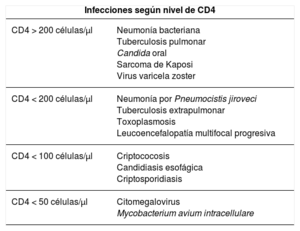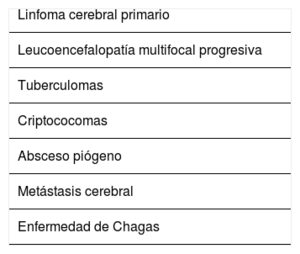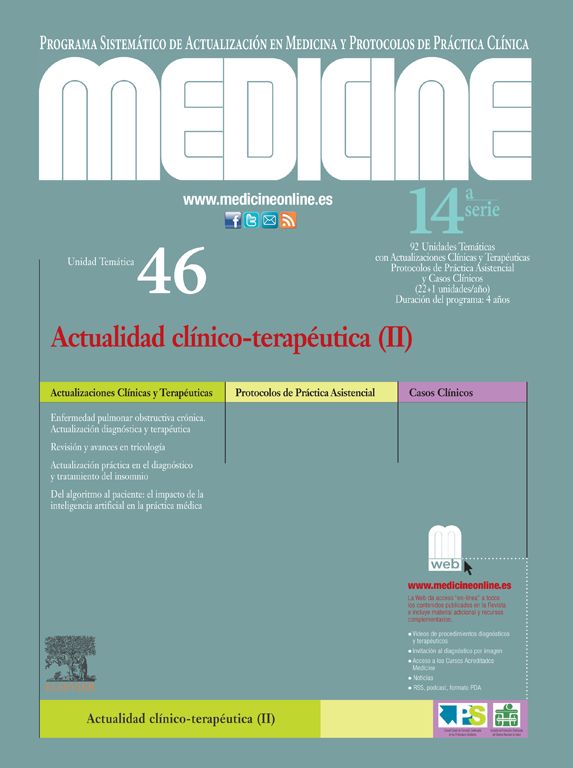Desde la introducción de la terapia antirretrovírica, la incidencia de las infecciones oportunistas (IO) en el paciente con infección por el VIH ha disminuido drásticamente. No obstante, dado que aún existe una alta proporción de diagnósticos tardíos, sigue siendo relevante el conocimiento de las características de las principales IO, así como su tratamiento y profilaxis. En España, entre 2010 y 2015, la IO definitoria de SIDA más frecuente fue la neumonía por Pneumocystis jiroveci en el 27% de los casos, seguida de la tuberculosis en el 21%. Otras IO relevantes son las neumonías bacterianas, la meningitis criptocócica, la toxoplasmosis cerebral (siendo una de las principales causas de lesión ocupante de espacio cerebral), la leucoencefalopatía multifocal progresiva, las infecciones por Candida y por citomegalovirus.
Palabras clave
Since the introduction of antiretroviral therapy, the incidence of opportunistic infections (OI) in patients with HIV has reduced drastically. However, since the proportion of late diagnoses remains high, it is still relevant to be aware of the features of the principal OI, and their treatment and prophylaxis. In Spain, between 2010 and 2015, the most common defining OI for AIDS was Pneumocystis jiroveci pneumonia, in 27% of cases, followed by tuberculosis in 21%. Bacterial pneumonia, cryptococcal meningitis, cerebral toxoplasmosis (one of the main causes of space-occupying lesion of the brain), progressive multifocal leukoencephalopathy, infections caused by Candida and cytomegalovirus are other relevant OI.
Keywords
Identifíquese
¿Aún no es suscriptor de la revista?
Comprar el acceso al artículo
Comprando el artículo el pdf del mismo podrá ser descargado
Teléfono para incidencias
De lunes a viernes de 9h a 18h (GMT+1) excepto los meses de julio y agosto que será de 9 a 15h








